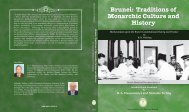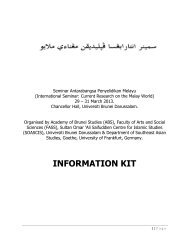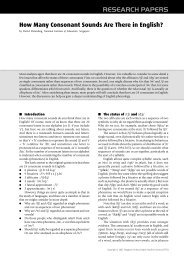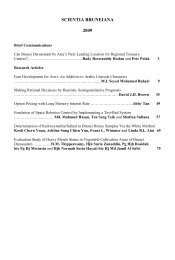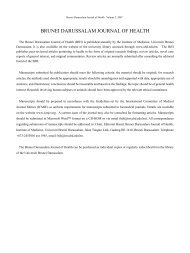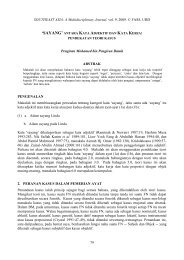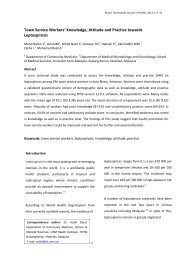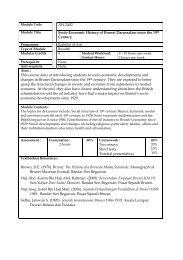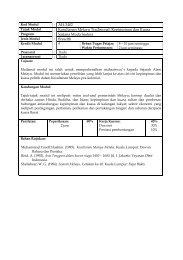cover single page - Universiti Brunei Darussalam
cover single page - Universiti Brunei Darussalam
cover single page - Universiti Brunei Darussalam
Create successful ePaper yourself
Turn your PDF publications into a flip-book with our unique Google optimized e-Paper software.
Preface<br />
When the Weekend Edition of the Borneo Bulletin carried a series of my articles<br />
(in ten parts) on “Why did <strong>Brunei</strong> accept British Protection in 1906” published<br />
from March to June this year, the response from the public was once again<br />
overwhelming. I present this book as a revised and improved version of the<br />
articles due to popular demand. Six years ago, <strong>Brunei</strong> Press released a similar<br />
compilation of my articles in a book entitled The <strong>Brunei</strong> Constitution of 1959:<br />
An Inside History that sold out in two editions within a short period of time after<br />
its release. That too, was an indication of how much <strong>Brunei</strong>ans look forward to<br />
reading books about their past. Despite this interest, bookstores in the country<br />
carry very few books on history, especially in English, for interested locals and<br />
visitors to the country.<br />
The idea to write this book occurred early in the year as <strong>Brunei</strong> commemorated<br />
the centenary of Residency Rule. The <strong>Brunei</strong> History Centre held a special history<br />
seminar at the International Convention Centre, from 1 st to 3 rd March. Scholars<br />
from <strong>Brunei</strong> presented papers delving into many aspects of British presence in<br />
<strong>Brunei</strong>. The seminar highlighted the fact how <strong>Brunei</strong>, on the eve of Residency<br />
rule, presented a fascinating example of a small state’s determination to ward off<br />
an avalanche of overpowering imperial designs. It is a familiar story related in<br />
many books, articles and dissertations. This book attempts to recapture the story<br />
for a general reader, minus the frills of footnote references and citations, and aims<br />
at a popular audience seeking entertainment as much as enlightenment. I believe<br />
that the study of the past can be made fun as well as informative. In writing this<br />
book I have consulted relevant writings by Nicholas Tarling, Pehin Dato Haji<br />
Jamil al Sufri, L. R. Wright, A. V. M. Horton, Graham Irwin, R. H. Reece, D. S.<br />
Ranjit Singh, Graham Saunders, K. G. Tregonning and others.<br />
I am sure there will be criticisms for the way in which the facts are presented and<br />
interpreted in this work. In view of its brevity, needless to say, discussions have to<br />
be succinct and selective. Specialist readers who want to know the story in its<br />
entirety should the consult primary sources and academic writings cited in the<br />
bibliography.<br />
xiv



